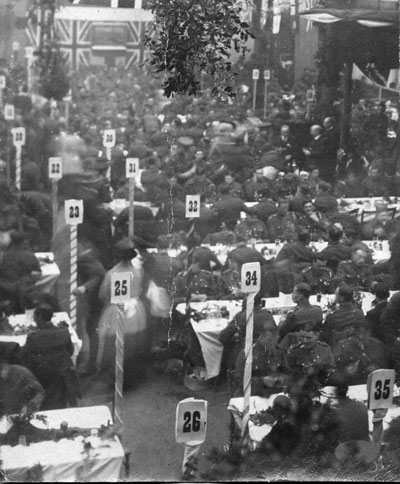
In January, 1919 the Suffolk Regiment's returned Prisoners of War were given a banquet by the grateful Mayor and Corporation of Bury St Edmunds. The feast took place in the Corn Exchange, and the room was decorated with flags and flowers. Crowds of people turned out to welcome the POWs to the event.
In January and February 1919 some of the 1/5th Suffolks returned home from Egypt, but rioting in Cairo slowed up the demobilisation. Not until May did they all get away.
|
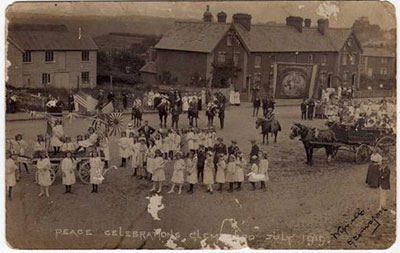
Peace celebrations at Glemsford, July 1919. Although the fighting ended with the Armistice of November 11th, 1918, German forces still occupied France and Belgium. Officially the state of war did not end until the signing of the Treaty of Versailles on June 28th, 1919. |
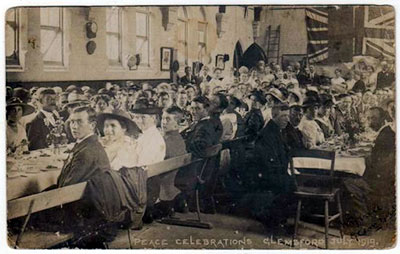
Peace celebrations and feast at Glemsford, 1919. With the signing of the Peace Treaty, everyone knew that at last the Great War for Civilisation was over. |
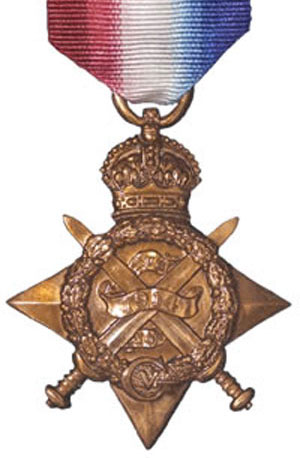
The Mons Star. This bronze medal award was officially called the 1914 Star. It was authorized by King George V in April 1917 for those who had served in France or Belgium between 5th August 1914 to midnight on 22nd November 1914 inclusive. A narrow horizontal bronze clasp sewn onto the ribbon, bearing the dates '5th AUG. - 22nd NOV. 1914' shows that the recipient had actually served under fire of the enemy during that period. These few months included the battle of Mons, the retreat to the Seine, the battles of Le Cateau, the Marne, the Aisne and the first battle of Ypres. There were approximately 378,000 1914 Stars issued. These actions had halted the otherwise overwhelming German advance, giving the allies a chance to mobilise more men and organise some sort of a plan of action.
(A very similar bronze medal was authorized in 1918, called the 1914-15 Star. Its similarity to the hard won Mons Star must have been galling the Old Contemptibles who survived Mons and Le Cateau)
|
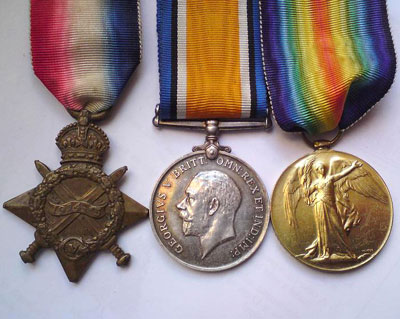
By 1920 many of the medals earned during the Great War were still being distributed. These medals were issued in unprecedented numbers.In 1919 a new cartoon was launched in the Daily Mirror called Pip, Squeak and Wilfred, and somehow these names became attached informally to the trio of war service medals which were issued in such great numbers.
"Pip" was a bronze star, properly called the 1914-15 Star, and was awarded to those who saw service in any theatre of war against the central powers between 5 August 1914 and 31 December 1915 except those eligible for the 1914 Star. Some 2,078,183 1914-15 Stars were issued according to the Imperial War museum. It is shown on the left of this cluster of medals.
"Squeak" was a silver medal, officially called the British War Medal 1914 - 1920. This medal takes the form of a solid silver medal with an image of a mounted figure of St George trampling the shield of the central powers with the dates 1914 and 1918 thereon. The reverse has the coinage head of George V. The British War Medal 1914-20 was issued to commemorate the successful conclusion of the war and awarded to those who had served in a theatre of war up to and including the official end of the war in 1920.
"Wilfred" was a bronze medal and was called officially the Victory Medal 1914 - 1918. It was decided amongst the Allies that a common theme would be adopted and that each country would produce a medal to commemorate the Victory. This medal took various forms according to the country but a common item was the rainbow coloured ribbon. The British medal shows the winged victory on the front holding a palm branch with the words "The Great War for Civilisation" on the reverse. The British medal was produced in bronze and was awarded to those who had received the 1914 or 1914-15 Star and to most of those who received the War Medal and could not be awarded alone.
|
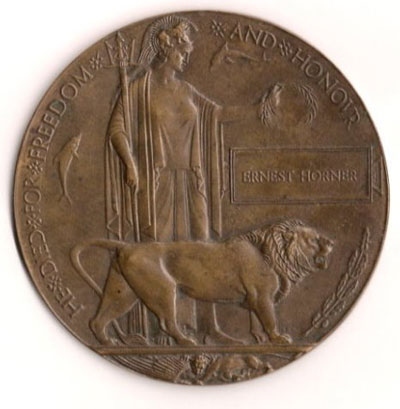
As well as the issue of medals, it was decided in 1919 to issue Memorial Plaques to the families who had lost a member due to the war. Each plaque was of bronze, and was 5 inches across, inscribed with the name of the fallen man or woman. Some 1.335 million were issued from 1919, 600 commemorating women, and production continued until the 1930s. Each plaque was accompanied by a memorial scroll and a covering note signed in facsimile by the King. These very soon became known as Dead Man's Pennies, and it was not unusual for them to be thrown away in disgust by grieving parents. |
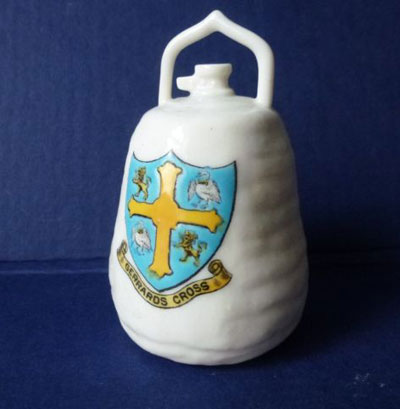
Goss armorial piece for sale as a souvenir of Gerrards Cross. The original was modelled on an incendiary bomb dropped by a Zeppelin airship on Bury St Edmunds on 30th April, 1915. This bizarre souvenir was sold by Goss for many years and used by many towns as a souvenir piece, each with its own town name and arms. (Goss crested china is typically in the form of small white glazed porcelain models, made from 1858 to 1939, carrying the coat of arms of the place where they were sold as a souvenir.) |
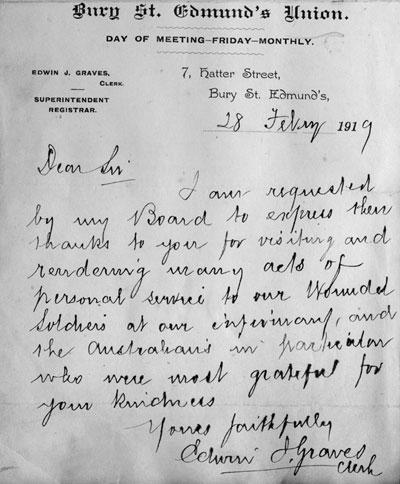
Walton Burrell had been a frequent visitor to comfort injured soldiers throughout the war. Born profoundly deaf, and, being 51, he was too old for military service, but combined his pursuit of photography with his voluntary hospital visiting. Burrell produced many photographs for soldiers to send home to their loved ones as part of his help and assistance. This letter of appreciation, dated 18th February, 1919, was sent from Edwin J Graves, Superintendent Registrar, Bury St Edmunds Union. It expresses thanks from the board for Burrell's visits and acts of service to the wounded soldiers at the infirmaries. Particular mention is made of his visits to Australian soldiers.
|
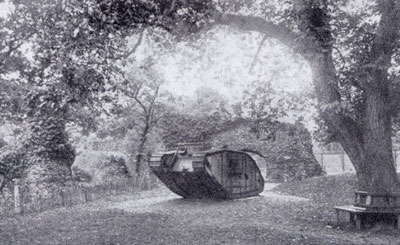
In December, 1919, Bury was presented with a defunct mark I British tank sporting the name "Kaffir", to reward the town's contribution of two million pounds raised by the local war savings committee for the war effort. On 12th December,1919, it was driven up Northgate Street to the Angel Hill where it was presented to the committee by Major E E Pearson of the Suffolk Regiment. The council gave it a home within the Abbey gardens where it stood by the Abbey Ruins until 1933.
|
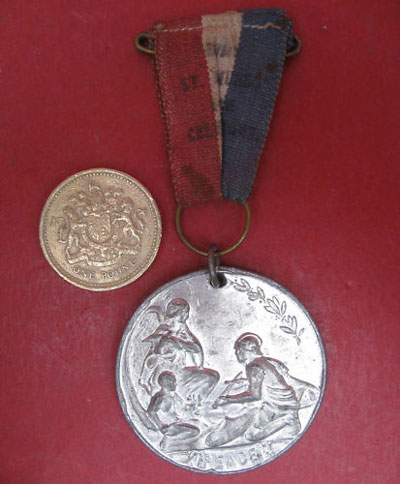
Peace Medal 1919 |
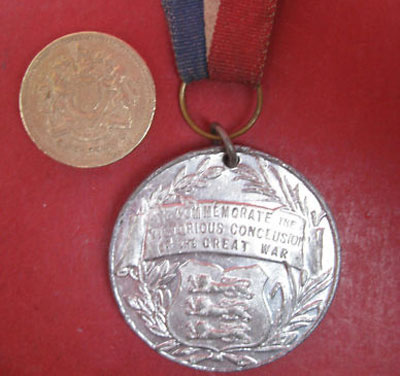
Peace Medal 1919, reverse |
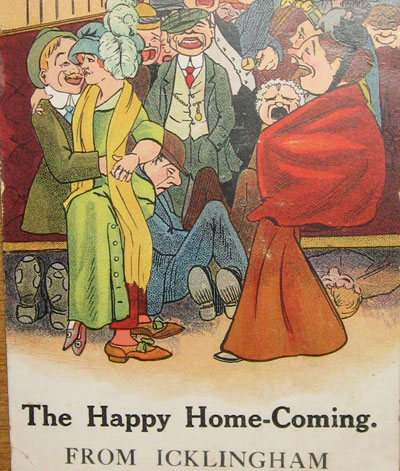
This generic card was simply overstamped with whatever town or village name was required. This one comes from the army camp at Icklingham. |
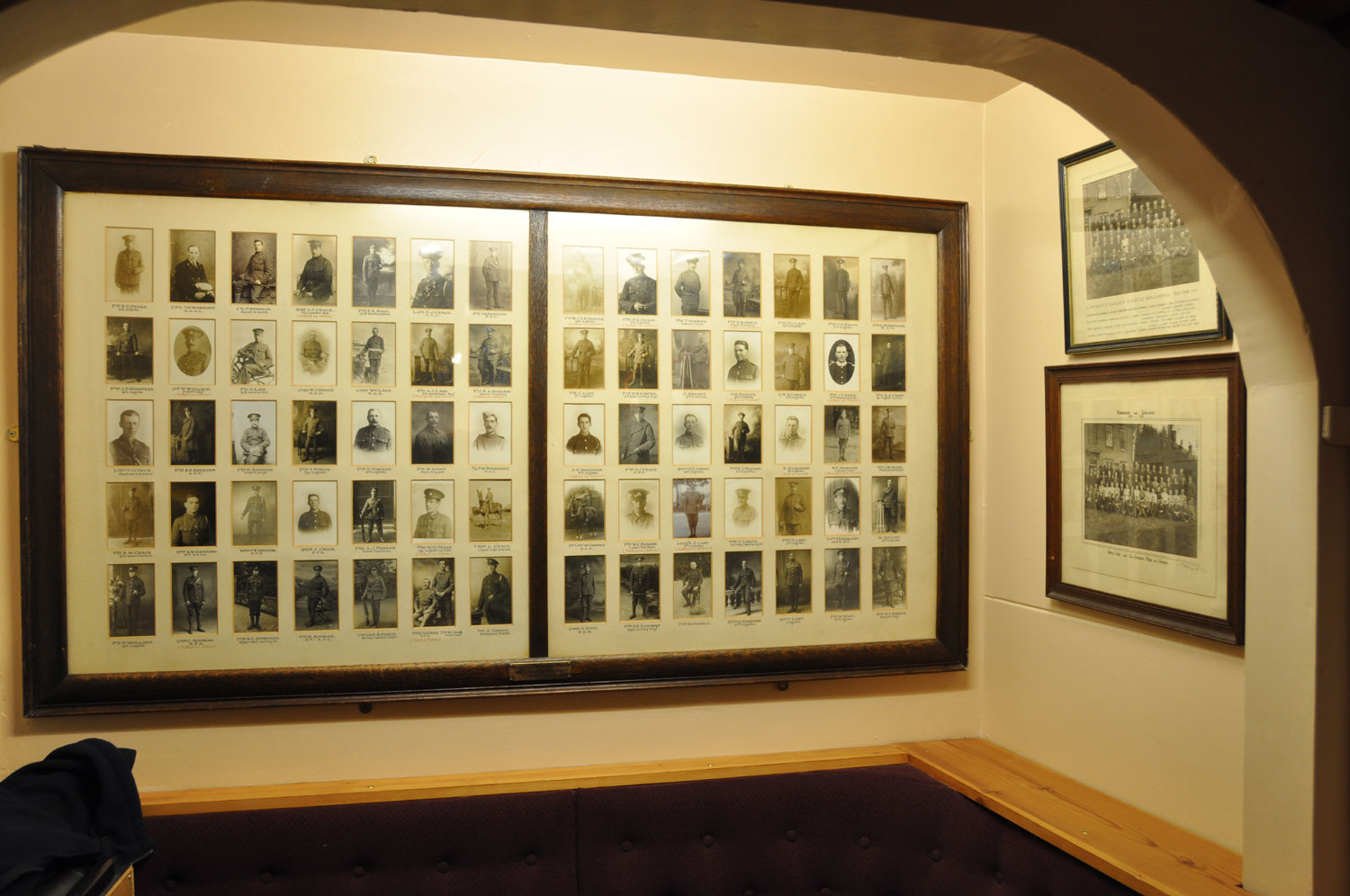
This is the memorial corner in the Horringer Social Club. The main display of photographs carries a brass plate which states, "Residents of Horringer and Ickworth, who served in the Great War, 1914-1918." Each man is named, with his rank, his regiment, and his fate where appropriate. |
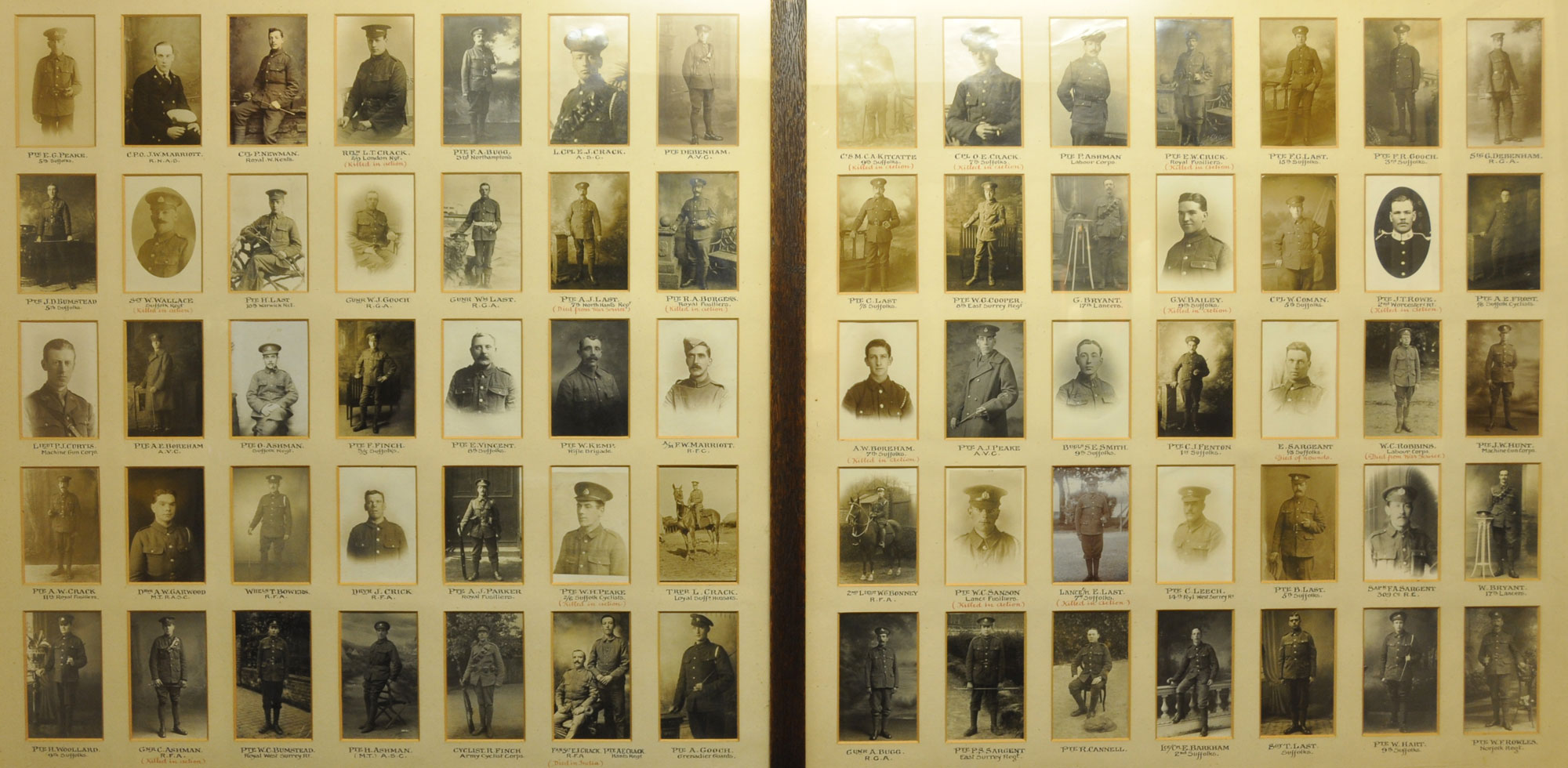
Another view of the Horringer men from the memorial already seen.
If you click on this thumbnail, you will receive a picture which is 354k long, but you should be able to make out individual names if required. (Users restricted to dial-up connections will have a bit of a wait.) |
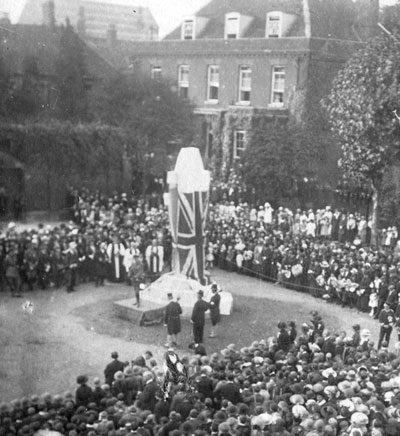
In October 1921 the War Memorial was erected on the Angel Hill in Bury St Edmunds. It was in the form of a Celtic Cross and was unveiled by General Lord Horn and dedicated by the Bishop in a ceremony attended by several thousand people.
|
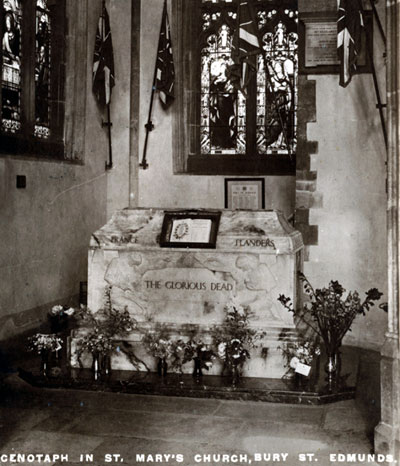
This Suffolk Regimental Cenotaph was installed in St Mary's Church at Bury St Edmunds, and dedicated in March, 1920. It has been the focus of Remembrance Day services ever since. In 2014 it was decided to relocate the cenotaph within St Mary's Church, causing protests from many individuals. |
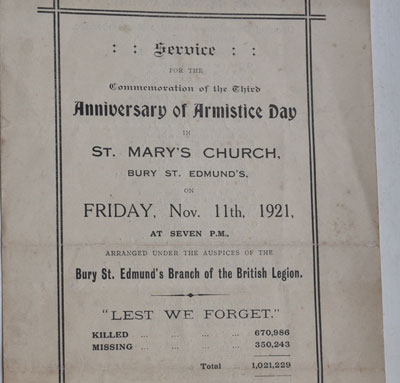
This remembrance service was held three years after the Armistice. |
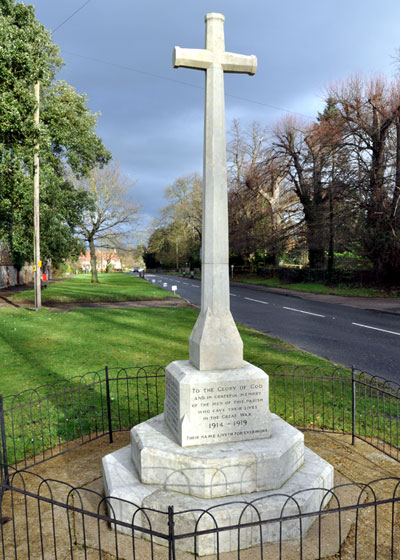
This is an example of a village memorial. This cross at Fornham All Saints records the names of 12 men from that parish who gave their lives in the Great War, 1914 - 1919. (One further name would be added following the Second World War.) |
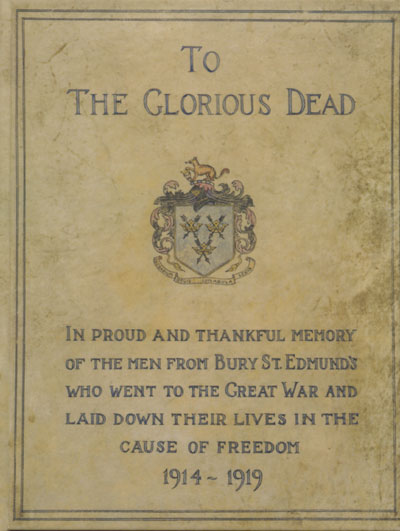
This book of remembrance was apparently a private production discovered in a sale at Bury St Edmunds. It lists Bury's war dead, including the seven people killed in the air raid in 1916. It contains 31 pages of names in alphabetical order. A facsimile edition of 50 copies was privately produced in 2014 by Mr J Crawford. |
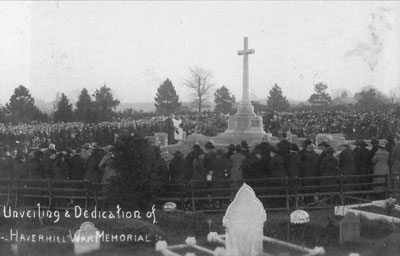
On 21st November, 1920, the war memorial at Haverhill cemetery was dedicated. It was unveiled in front of a very large crowd by Lt General Sir Charles Briggs. The memorial was in the form of a cross in stone, placed upon a substantial pedestal, around which were engraved 144 names of Haverhill's war dead. (A few of these names were added at a later date.) |
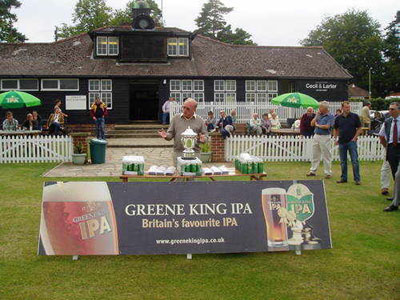
In July, 1920, Greene King opened the Victory Sports Ground in Nowton Road, Bury St Edmunds. This had been the brainchild of Edward Lake, when he was Managing Director of that company. He had six sons, who had all served in the Great War, and who had all come home safely. He had persuaded the Board of the company to purchase 26 acres of land to commemorate the safe return of most of the Brewery's workforce, and those 21 who were killed. The pavilion was built at the same time and survived until the redevelopment of 2013. |
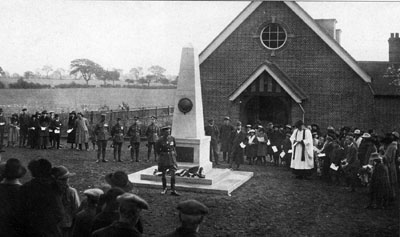
This is the memorial erected for the dead from the Lord Cadogan's Culford Estate. It contains 23 names from the parishes of Culford, Ingham, West Stow and Wordwell lost during the Great War. The 6th Earl Cadogan unveiled the monument. His brother was one of the dead. Behind is the Culford Village Hall erected just before the war. |
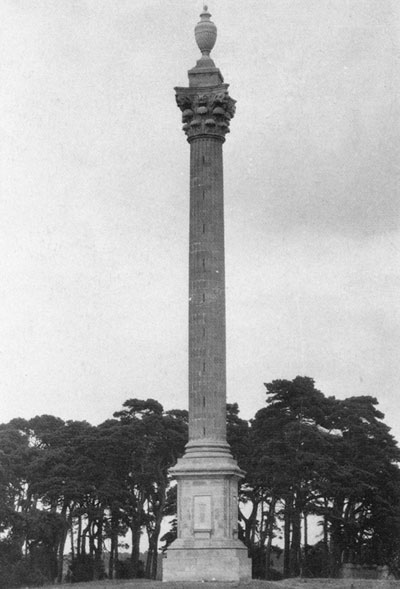
The most spectacular local monument from this period must be the Elveden memorial alongside the A11. It stands at the junction of Elveden, Icklingham and Eriswell parishes and contains the names of 48 men who died from those parts of Lord Iveagh's Elveden Estate. The Earl commissioned Clyde Young to design it and it was dedicated on 21st November, 1921. At 113 feet tall, it is the tallest memorial in Suffolk. |
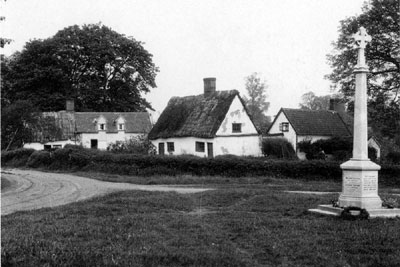
This memorial stands on Denston Village Green, and although less spectacular than Elveden, it is a a fine elegant tribute to the dead of the village. |

